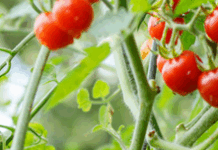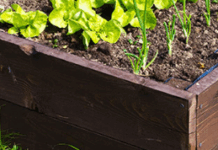Most garden soils in Kansas have adequate levels of all nutrients other than nitrogen IF the area has been fertilized in the past. However, it is recommended that a soil test be done to be sure of the nutrient needs of your fruit planting. If the soil test recommends phosphorus and potassium, use a 10-10-10 fertilizer or 12-12-12 instead of what is recommended below but triple the rate. For example, instead of ½ cup per 10 feet of row, use 1.5 cups per 10 feet of row.
Strawberries (June-Bearing): June-bearing strawberries are not fertilized in early spring as this can make the berries soft and more prone to rot. Fertilize at renovation and again in late August to early September. In most cases, strawberries need primarily nitrogen, so the recommendations are for a high nitrogen fertilizer such as a 27-3-3, 29-5-4, 30-3-3 or something similar. Though recommended for lawns, these fertilizers will also work well for strawberries as long as they do not contain weed killers or crabgrass preventers. Apply ½ cup for every 10 feet of row. Note: For more information on renovating strawberries, see page four at http://www.bookstore.ksre.ksu.edu/pubs/mf598.pdf
Strawberries (Everbearing or Day-Neutral): Fertilize in the spring as growth starts and again in early August. Use the rates recommended for June-bearing strawberries. Everbearing (dayneutral) strawberries are not renovated.
Brambles (Blackberries and Raspberries): In most cases, brambles need primarily nitrogen, so use a high nitrogen fertilizer such as a 27-3-3, 29-5-4, 30-3-3 or something similar unless a soil test directs otherwise. Though recommended for lawns, these fertilizers will also work well as long as they do not contain weed killers or crabgrass preventers. Apply ½ cup for every 10 feet of row. Fertilize in spring as growth begins. (Ward Upham)




